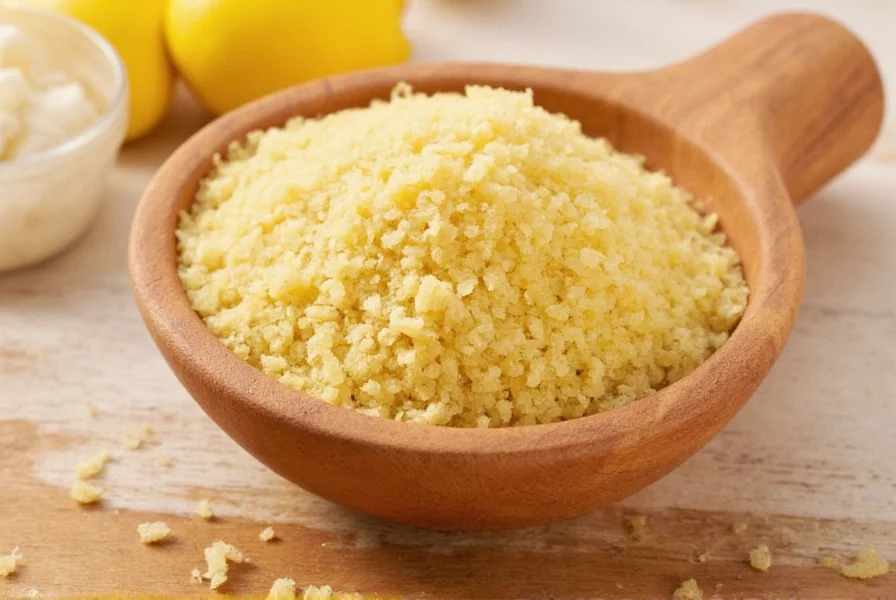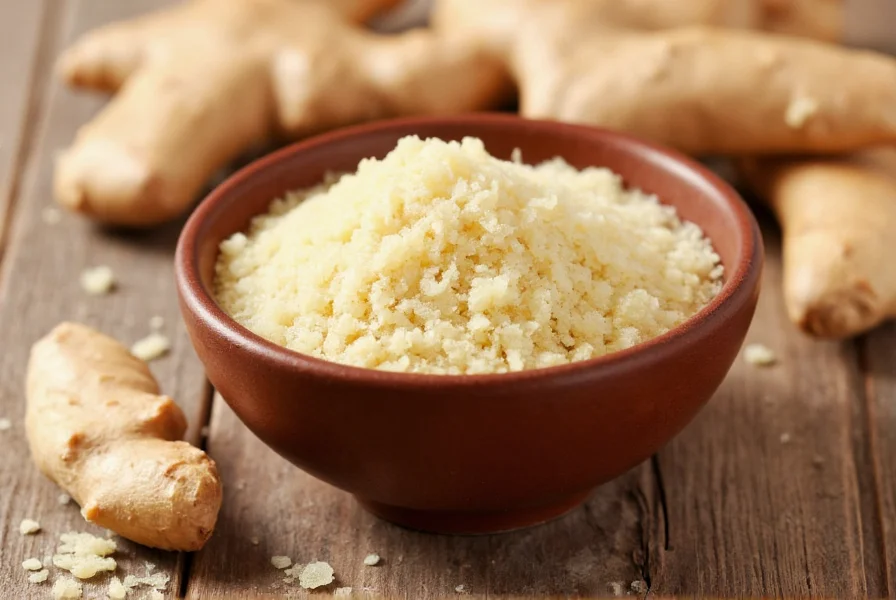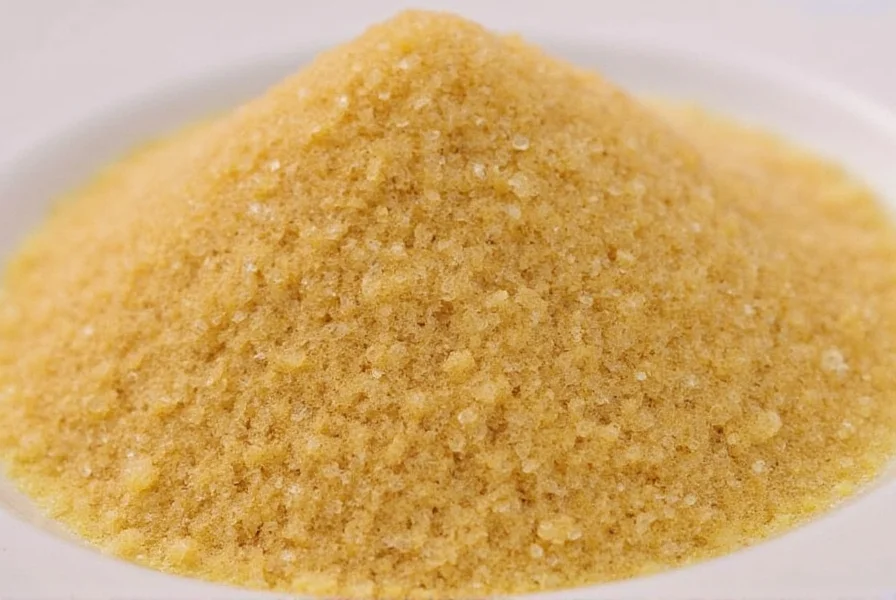Ginger sugar, also known as candied ginger or crystallized ginger, represents one of the most versatile preserved ginger preparations available to home cooks and professional chefs alike. This simple yet transformative process converts fresh ginger root into a shelf-stable ingredient that maintains ginger's characteristic warmth while developing complex sweet-spicy notes through the preservation process.
What Exactly Is Ginger Sugar?
Ginger sugar refers to ginger root that has been peeled, sliced, and slowly cooked in a sugar syrup until the ginger becomes tender and infused with sweetness. The final product features soft, translucent ginger pieces coated in fine sugar crystals. Unlike ginger powder which loses many volatile compounds during drying, ginger sugar preserves more of fresh ginger's aromatic compounds while adding complementary sweet notes.
The Science Behind Ginger Sugar Production
The preservation process works through osmosis - as fresh ginger simmers in concentrated sugar syrup, water moves out of the ginger cells while sugar moves in. This dual action accomplishes several important transformations:
| Transformation | Result | Practical Benefit |
|---|---|---|
| Moisture reduction | From 80% to 20% water content | Extended shelf life at room temperature |
| Sugar infusion | Approximately 65% sugar by weight | Natural preservative properties |
| Enzyme deactivation | Halts enzymatic browning | Maintains appealing golden color |
This scientific process explains why properly made ginger sugar maintains quality for months when stored correctly, unlike fresh ginger which typically spoils within weeks.
Different Types of Ginger Sugar Products
Not all ginger sugar products are created equal. Understanding these variations helps select the right product for specific culinary applications:
- Traditional crystallized ginger - Features soft ginger pieces generously coated in sugar crystals, offering intense ginger flavor with noticeable heat
- Ginger sugar syrup - The liquid byproduct from making crystallized ginger, perfect for cocktails and beverages
- Ginger sugar blends - Powdered combinations of sugar and dried ginger, ideal for baking applications
- Candied ginger slices - Larger preserved pieces often used as edible garnishes or confections

Culinary Applications of Ginger Sugar
Ginger sugar's versatility makes it valuable across multiple culinary domains. Professional chefs and home cooks utilize it in these distinctive ways:
Baking and Pastry Applications
When incorporated into baked goods, ginger sugar provides both flavor and textural elements that regular sugar cannot match. The small pieces of preserved ginger create delightful bursts of flavor in:
- Spice cookies and gingerbread
- Muffins and quick breads
- Cake fillings and frostings
- Shortbread and other delicate pastries
Beverage Enhancements
Ginger sugar dissolves readily in both hot and cold liquids, making it superior to fresh ginger for many drink applications:
- Specialty coffee sweetener that adds dimension beyond plain sugar
- Base for ginger simple syrup in craft cocktails
- Flavor enhancer for herbal teas and lemonades
- Key ingredient in traditional ginger beer production
Health Benefits of Ginger Sugar Compared to Regular Sugar
While still a sweetener, ginger sugar offers potential advantages over refined white sugar:
- Digestive support - The ginger component may help alleviate nausea and support digestion, making it a preferred sweetener when experiencing stomach discomfort
- Lower glycemic impact - Some studies suggest ginger may help moderate blood sugar response compared to pure sucrose
- Antioxidant properties - Ginger contains potent antioxidants like gingerols that remain active in the preserved product
- Anti-inflammatory effects - The bioactive compounds in ginger may provide mild anti-inflammatory benefits
It's important to note that ginger sugar still contains significant sugar content, so moderation remains key, particularly for individuals managing blood sugar levels.
Creating Perfect Homemade Ginger Sugar
Producing high-quality ginger sugar at home requires attention to detail but yields superior results compared to many commercial products. Follow this professional approach for optimal flavor and texture:
Essential Ingredients
- 4 ounces fresh ginger root (preferably young, tender ginger)
- 2 cups granulated sugar, divided
- 2 cups water
- Optional: 1 tablespoon lemon juice (helps maintain color)
Step-by-Step Preparation
- Peel and thinly slice ginger into uniform 1/8-inch pieces
- Combine ginger, 1 cup sugar, and water in a saucepan
- Bring to a gentle simmer over medium heat
- Cover and cook for 30-40 minutes until ginger becomes translucent
- Remove lid and increase heat to medium-high
- Add remaining sugar and continue simmering until syrup thickens
- Drain ginger pieces and spread on wire rack to cool
- Toss in additional sugar while still slightly damp
- Store in airtight container at room temperature

Proper Storage Techniques for Maximum Freshness
To maintain optimal quality and extend shelf life of your ginger sugar:
- Store in an airtight container away from direct sunlight
- Include a food-safe desiccant packet to prevent moisture absorption
- For long-term storage (beyond 3 months), freeze in vacuum-sealed bags
- Never store in refrigerator where moisture can cause crystallization issues
- Check periodically for any signs of mold or off-odors
Properly stored homemade ginger sugar maintains peak quality for 3-4 months at room temperature, while commercial products typically last 6-8 months when unopened.
Ginger Sugar Versus Other Ginger Products
Understanding how ginger sugar differs from related ginger preparations helps select the right ingredient for specific culinary needs:
- Ginger powder - More concentrated flavor but lacks textural element; better for spice blends than as standalone ingredient
- Fresh ginger - More pungent heat but shorter shelf life; requires peeling and grating before use
- Ginger syrup - Liquid form ideal for beverages but lacks solid ginger component
- Preserved ginger in syrup - Similar to ginger sugar but stored in liquid rather than crystallized form
Expert Tips for Using Ginger Sugar Effectively
Professional chefs recommend these techniques for maximizing ginger sugar's potential:
- Finely chop crystallized ginger for even distribution in baked goods
- Infuse cream or milk with ginger sugar for flavored desserts
- Create a ginger sugar crust for meats like salmon or pork
- Use the leftover syrup from homemade ginger sugar as cocktail mixer
- Grind excess ginger sugar into "ginger sugar dust" for finishing desserts
Frequently Asked Questions
Can I substitute ginger sugar for fresh ginger in recipes?
Yes, but with adjustments. Use 1 tablespoon of finely chopped ginger sugar to replace 1 teaspoon of fresh grated ginger, as the sugar content and concentrated flavor require reduced quantities. Remember that ginger sugar adds sweetness that fresh ginger doesn't provide, so you may need to reduce other sweeteners in your recipe.
Is ginger sugar effective for nausea relief?
Many people find ginger sugar helpful for mild nausea relief due to its ginger content, though the sugar content means it shouldn't be consumed in large quantities when experiencing stomach upset. The combination of ginger's natural compounds and the slow-release nature of crystallized ginger may provide longer-lasting relief compared to fresh ginger for some individuals.
How can I make my homemade ginger sugar less sweet?
To reduce sweetness in homemade ginger sugar, decrease the sugar-to-water ratio in the syrup (try 1:1 instead of 1:2), shorten the cooking time to prevent excessive sugar absorption, or rinse the ginger pieces briefly in cold water after cooking to remove surface sugar before the final drying stage. For baking applications, you can also chop the ginger more finely to distribute the sweetness more evenly.
Does ginger sugar contain the same beneficial compounds as fresh ginger?
Ginger sugar retains many of fresh ginger's beneficial compounds, though the concentration of certain volatile compounds decreases during the cooking process. The primary bioactive compounds (gingerols and shogaols) remain present, though in different ratios than fresh ginger. The preservation process actually converts some gingerols to shogaols, which may have enhanced bioavailability for certain health benefits.











 浙公网安备
33010002000092号
浙公网安备
33010002000092号 浙B2-20120091-4
浙B2-20120091-4